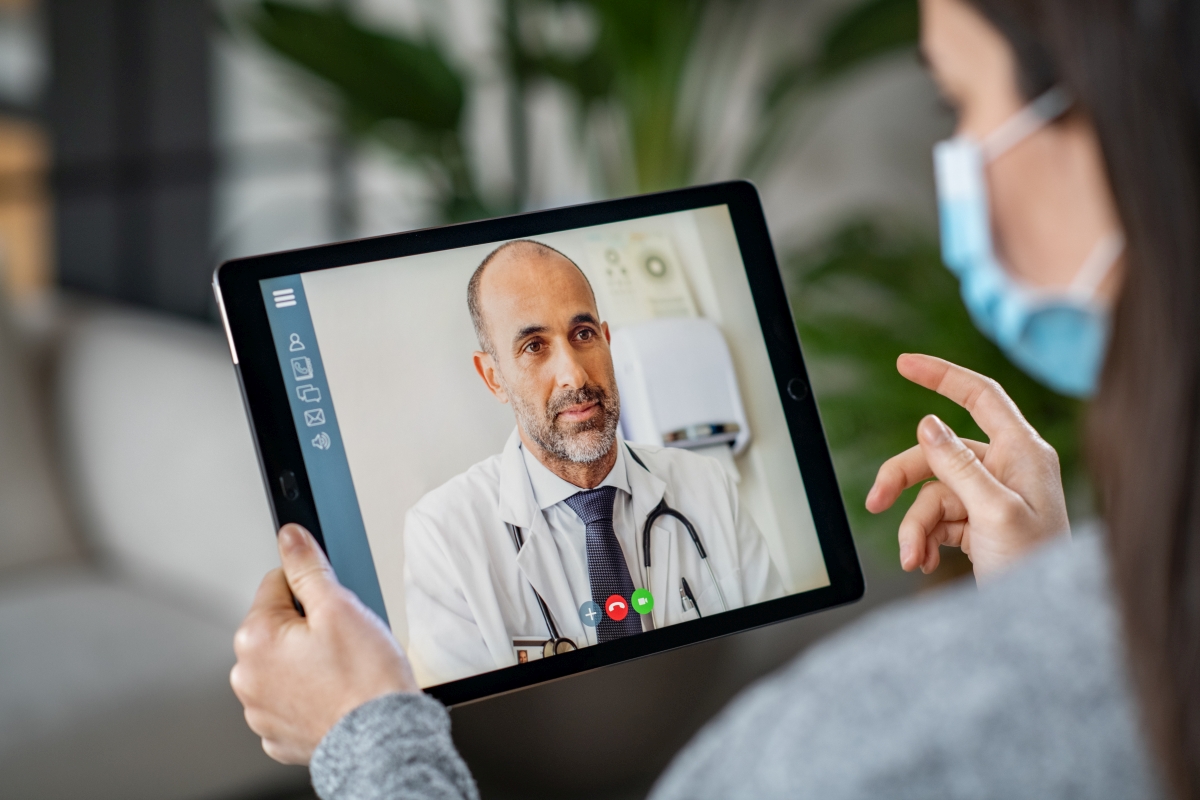Benefits of Using Teledoctors for Remote Medical Consultations
Benefits of Using Teledoctors for Remote Medical Consultations
Blog Article
Teledoctors: Linking the Void In Between Individuals and Doctor
The appearance of teledoctors represents a substantial shift in the health care landscape, providing remedies to long-standing access problems encountered by clients and providers alike. By integrating telemedicine right into standard practices, health care systems can get to remote and underserved populations, supplying critical medical examinations without the obstacles of distance and traveling.
Rise of Telemedicine

The rise of telemedicine is also fueled by the need for cost-effective health care. Medical care systems around the world are under stress to lower expenditures while preserving high quality care, and telemedicine offers a viable solution. By decreasing the need for physical check outs, telemedicine decreases overhead prices for medical care facilities and ultimately lowers the economic problem on clients.
Additionally, the COVID-19 pandemic functioned as a catalyst, increasing the fostering of telemedicine practices. Social distancing measures and the demand to reduce exposure threat necessitated a change in the direction of remote assessments, triggering regulatory bodies to adjust and support telehealth services. This change has not only tried and tested telemedicine's effectiveness but additionally its possible to progress as a staple component of modern-day healthcare systems.
Advantages for Clients
As telemedicine continues to improve healthcare shipment, patients stand to get substantially from this transformation. Mainly, telemedicine enhances access, enabling people in remote or underserved locations to speak with medical care companies without the demand for substantial travel. This is especially beneficial for individuals with flexibility concerns or those living in country regions where medical care facilities may be limited. Telemedicine also uses people the benefit of getting clinical suggestions and treatment from the comfort of their homes, minimizing the moment and cost connected with taking a trip to a medical care center.
In addition, telemedicine sustains continuity of care by facilitating regular follow-ups and monitoring, which are essential for managing chronic problems. People can conveniently arrange visits and gain access to medical care solutions outside typical workplace hours, fitting their hectic lifestyles. This flexibility brings about boosted individual engagement and adherence to therapy strategies, possibly leading to much better health end results.
In addition, telemedicine can assist reduce the risk of infection transmission, a problem increased by the COVID-19 pandemic. By reducing the requirement for in-person sees, clients can avoid jampacked waiting spaces and reduce direct exposure to infectious illnesses. Inevitably, telemedicine equips patients by giving prompt, effective, and individualized health care services.
Advantages for Service Providers
For medical care suppliers, telemedicine offers substantial advantages that boost the effectiveness and reach of their practice. By leveraging electronic technology, suppliers can extend their solutions to a broader market, consisting of those in remote or underserved locations. This not only minimizes geographical obstacles but additionally optimizes individual retention and procurement by making health care a lot more available.
With telemedicine, the demand for physical space diminishes, allowing companies to conserve on actual estate and operational costs. This adaptability can lead to raised person appointments per day, thereby boosting revenue potential.
Telemedicine also fosters a more collective atmosphere for healthcare companies. teledoctors. It allows seamless sharing of client information amongst professionals, boosting analysis accuracy and treatment outcomes. In addition, electronic systems can integrate with electronic wellness documents (EHRs), improving data precision and simplifying management jobs
In addition, telemedicine enhances client complete satisfaction, which is important for service provider credibility and success. By navigate to this website offering convenient and prompt care, carriers can improve client loyalty and involvement, even more reinforcing the provider-patient connection.
Conquering Obstacles
While telemedicine offers many advantages for doctor, it also presents difficulties that require mindful consideration. One significant obstacle is making sure information personal privacy and safety and security. As individual details is transmitted digitally, the threat of information breaches increases, demanding durable cybersecurity measures. Health care service providers have to follow rigorous laws like HIPAA to safeguard delicate information, thus calling for financial investment in secure systems and recurring staff training.
One more difficulty is the electronic divide, which can prevent accessibility to telemedicine solutions. Not all patients have equal access to the necessary innovation or web connectivity, especially those in rural or underserved locations. This difference can exacerbate existing healthcare inequalities, making it important for suppliers to discover different options, such as partnerships with community organizations, to bridge this gap.
Furthermore, there are limitations in performing health examinations from another location. Particular problems need in-person evaluation, highlighting the requirement for a crossbreed design that integrates telemedicine with conventional check outs. When telemedicine is proper and guaranteeing seamless changes between in-person and virtual treatment., suppliers should browse these obstacles by establishing protocols to recognize.
Future of Health Care
The future of health care is poised for a transformative advancement, driven by the fast integration of technology and advancement. Central to this shift is the surge of telemedicine, which is redefining exactly how clinical services are accessed and delivered. With advancements in data, telehealth platforms are becoming extra advanced, supplying real-time examinations, remote patient tracking, and individualized treatment strategies. This not only enhances client comfort yet also increases access to health care, specifically in underserved and rural investigate this site locations.
Synthetic intelligence (AI) and artificial intelligence are likewise readied to play pivotal roles. These modern technologies can analyze vast quantities of data, supplying anticipating understandings right into patient wellness, enhancing analysis precision, and individualizing therapy plans. AI-driven tools can augment doctor' capabilities, resulting in more educated decision-making and far better patient results.
In addition, wearable technology and Net of Clinical Things (IoMT) gadgets are revolutionizing client involvement and try this proactive health and wellness administration. These tools enable continuous health and wellness surveillance, enabling early detection of possible concerns and prompt interventions.
As these modern technologies remain to advancement, they guarantee to develop a more efficient, available, and patient-centric health care system, inevitably linking the void in between patients and healthcare carriers. - teledoctors
Conclusion
Medical care suppliers benefit from more effective time management and boosted partnership possibilities. In spite of challenges such as governing issues and technical barriers, the future of medical care appears reliable and progressively comprehensive due to the integration of telemedicine right into traditional treatment models.

As telemedicine continues to improve healthcare shipment, people stand to get significantly from this change. Largely, telemedicine improves access, allowing individuals in remote or underserved locations to consult health care providers without the requirement for considerable travel. Telemedicine likewise supplies patients the comfort of getting medical suggestions and therapy from the comfort of their homes, decreasing the time and price associated with traveling to a medical care center.
Ultimately, telemedicine encourages individuals by providing timely, effective, and personalized health care services.
Report this page